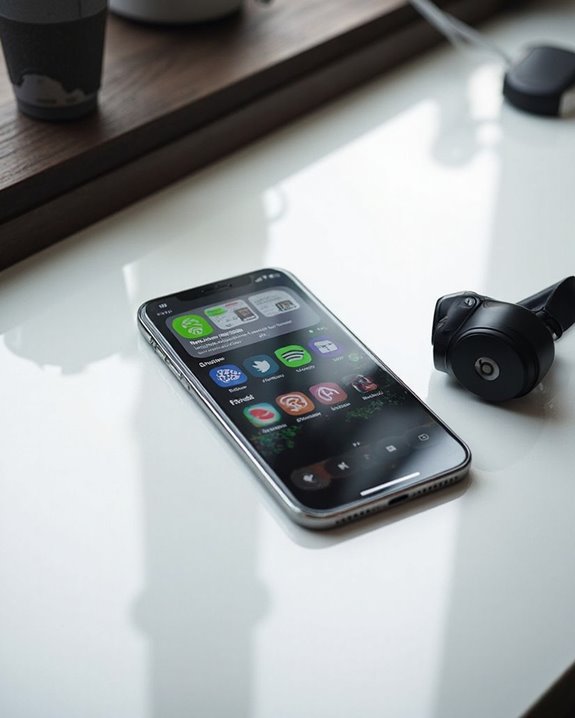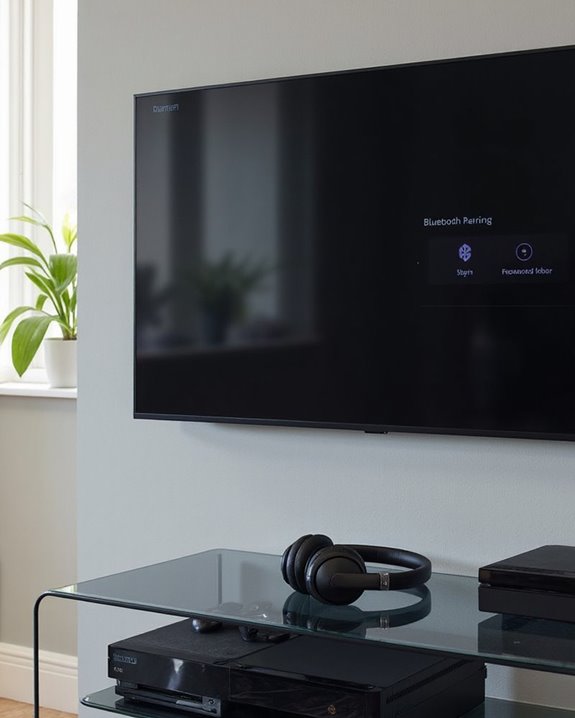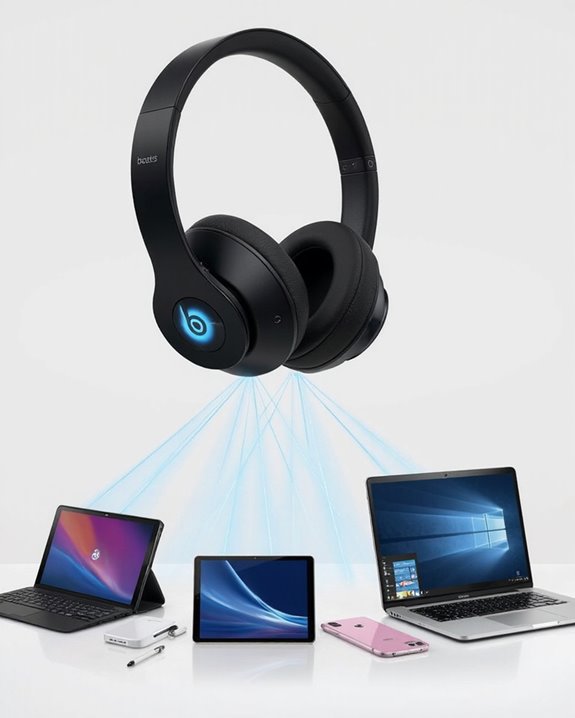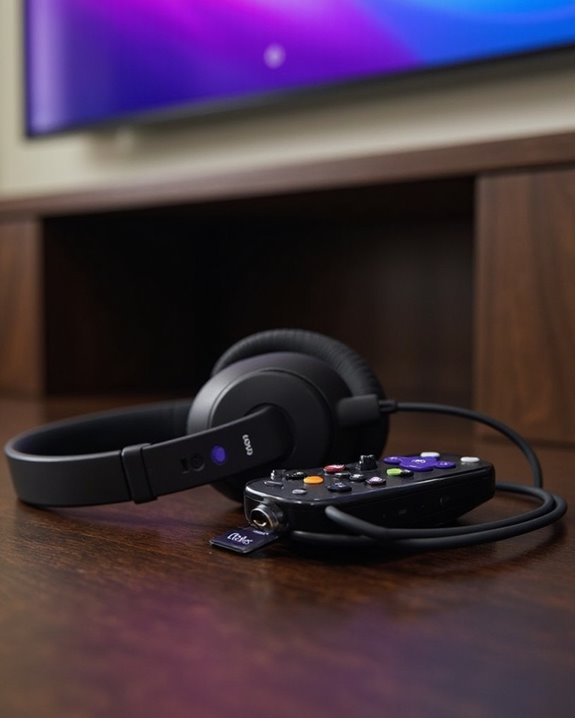Apple intentionally integrates Beats products through iOS system frameworks rather than a standalone app. After acquiring Beats in 2014, Apple streamlined management by incorporating controls into Control Center, Bluetooth menus, and Siri functionality. This approach eliminates user confusion, guarantees cross-platform compatibility, and delivers automatic firmware updates via Bluetooth. One-tap setup animations and Apple ID authentication further enhance the seamless experience. The thorough integration strategy reflects broader industry trends favoring universal solutions over device-specific applications.
Key Takeaways
- Apple integrated Beats functionality directly into iOS, eliminating the need for a standalone app.
- Following Apple’s acquisition in 2014, Beats features were strategically incorporated into existing Apple services.
- Apple prefers universal solutions over device-specific apps to reduce user confusion and streamline experience.
- Beats headphones receive firmware updates and pairing capabilities through iOS system frameworks rather than dedicated apps.
- The transition focused on hardware excellence while software functions were absorbed into Apple Music and iOS controls.
The Evolution of Beats Products Under Apple’s Ownership
The acquisition of Beats Electronics by Apple in August 2014 marked a significant turning point for the audio brand’s trajectory. Worth $3 billion, this purchase represented Apple’s largest acquisition at the time and integrated Beats’ premium audio technology into Apple’s expanding ecosystem.
Following the acquisition, Beats underwent substantial Design Evolution while maintaining its identity as a high-end audio brand. Apple’s influence manifested through enhanced product integration, streamlined pairing processes, and improved software updates. The hiring of Samuel Ross as Principal Design Consultant in 2023 signaled Apple’s commitment to refining Beats’ aesthetic direction.
Apple’s global distribution network facilitated Market Expansion for Beats products, increasing their availability worldwide while preserving the brand’s cultural relevance through continued artist collaborations and partnerships. The introduction of the Beats Studio Pro with Bluetooth 5.3 technology and advanced features further exemplifies Apple’s push to blend high-quality audio performance with cutting-edge connectivity.
Device-Specific Apps vs. Comprehensive Solutions
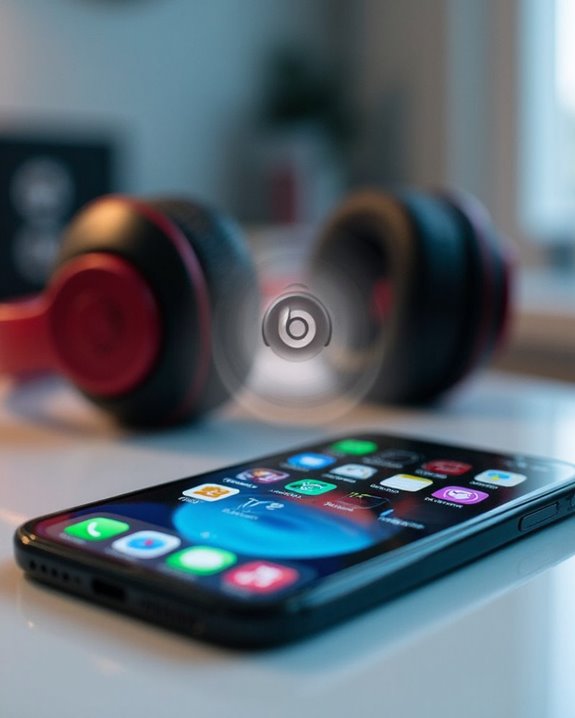
While Apple shaped Beats’ hardware evolution, a different strategy emerged for software integration. Rather than creating separate Device Apps for each product line, Apple opted for universal solutions that integrate Beats functionality into existing iOS frameworks.
This approach leverages the advantages of integrated solutions while addressing their typical drawbacks. Data shows mobile apps typically achieve 157% higher conversion rates than mobile websites, but maintaining multiple device-specific platforms requires significant resources.
Apple’s strategy eliminates potential user confusion by incorporating Beats controls into familiar iOS interfaces, ensuring cross-platform compatibility while maintaining optimized performance. This unified approach simplifies the user experience across Apple’s ecosystem without sacrificing the targeted experience that device-specific apps provide.
The integration aligns with industry trends showing integrated solutions often deliver better long-term cost-effectiveness and broader market reach. Additionally, unlike Apple-centric limitations, many Android-compatible wireless earbuds offer multipoint connectivity for seamless device switching, highlighting the benefit of universal integration in audio technology.
How Apple Integrated Beats Into Existing Services

Following Apple’s acquisition of Beats in 2014, systematic integration replaced the need for standalone apps by embedding Beats functionality directly into iOS core services. This ecosystem blending strategy delivered a seamless user experience while eliminating redundant software.
Apple implemented service integration through multiple channels:
- Automatic firmware updates delivered via Bluetooth
- Streamlined pairing animations and one-tap setup
- Support documentation through Apple’s existing channels
- Cross-device connectivity through Apple ID authentication
The integration extends beyond mere convenience, leveraging Apple’s hardware expertise to enhance Beats’ performance. Users can control Beats headphones through Control Center, adjust settings through Bluetooth menus, and utilize Siri for voice commands—all without launching separate applications. This approach maximizes efficiency while maintaining the distinctive Beats identity within Apple’s broader ecosystem.
The Transition From Beats Music to Hardware Focus
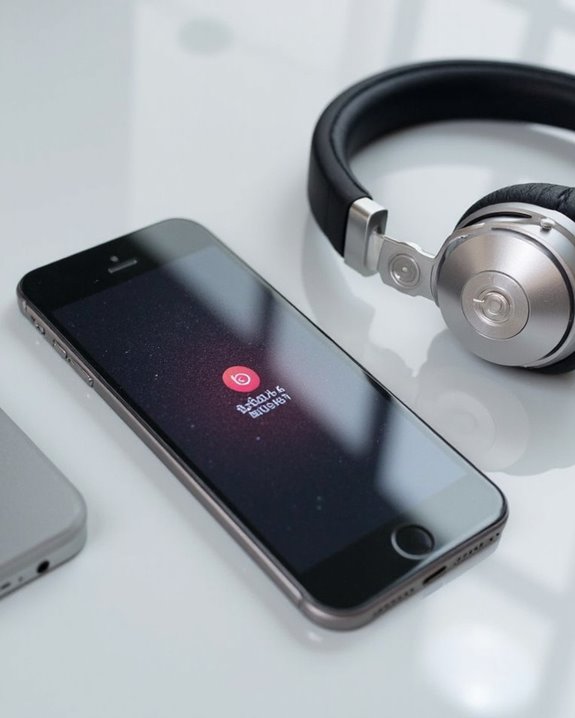
Beats Music’s transformation from streaming platform to integrated hardware strategy marked a pivotal shift in Apple’s acquisition roadmap. Following the $3 billion purchase in 2014, Apple executed a calculated business reorientation, discontinuing the streaming service when Apple Music launched in June 2015.
This shift analysis reveals Apple’s strategic decision to leverage Beats’ audio engineering expertise rather than maintaining a separate streaming platform. Without a dedicated Beats app for iPhone users, the company channeled resources toward enhancing its hardware portfolio instead.
The shift aligned with market trends showing consumers preferred integrated services. Apple maintained the Beats brand identity while focusing on product development, resulting in expanded audio equipment offerings and seamless integration with Apple’s ecosystem—ultimately prioritizing tangible products over digital services.
Finding and Managing Your Beats Products Today

Despite the absence of a dedicated iPhone app, managing Beats audio devices within Apple’s ecosystem remains straightforward through alternative solutions. Device Discovery occurs automatically when compatible Beats products are placed in pairing mode near an iPhone, triggering an on-screen setup prompt similar to AirPods.
For iOS users, the Find My app serves as the primary management hub, allowing location tracking of compatible Beats devices. Manual Management is handled through the Bluetooth settings menu, where users can adjust basic connection preferences and rename devices.
Android users benefit from a dedicated Beats app on the Google Play Store, offering firmware updates and customization options. This cross-platform approach guarantees that regardless of device preference, users can access core functionality while Apple maintains seamless integration within its ecosystem without requiring a separate application.
Additionally, many Beats products incorporate Bluetooth 5.4 technology to provide enhanced security and a stable connection up to 33 feet.
User Experience Challenges With Multiple Beats Devices
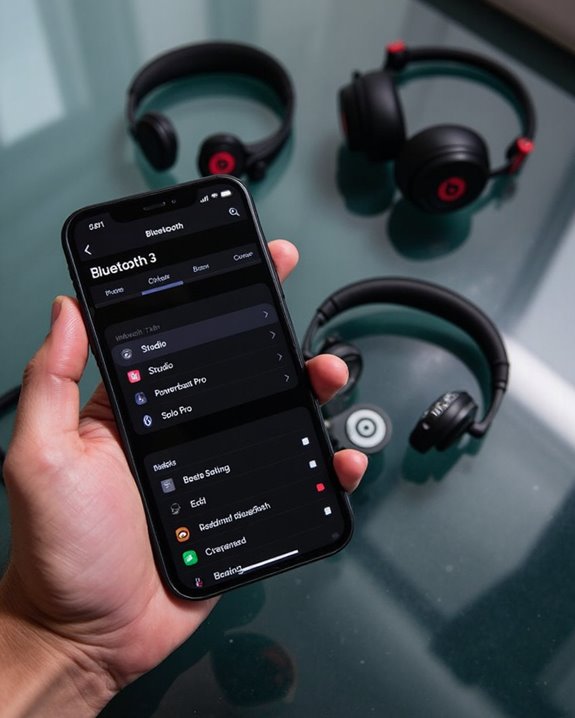
Managing multiple Beats audio devices presents unique challenges that can impact the overall user experience, even as alternatives exist for basic device control. Users frequently encounter connectivity glitches when attempting to switch between different Beats products, resulting in frustrating interruptions during listening sessions.
Synchronization failures between paired earbuds create noticeable audio delays, particularly problematic during podcast listening or video watching. These technical limitations stem from Bluetooth interference and firmware inconsistencies across the product ecosystem.
The absence of a dedicated management platform compounds these issues. Users must navigate device-specific quirks without unified software guidance, relying instead on the limited controls offered through iOS settings. For premium products commanding high price points, these experience gaps create a disconnect between consumer expectations and actual performance, especially when comparing to competitors’ dedicated companion apps.
What the Future Holds for Beats Software Integration
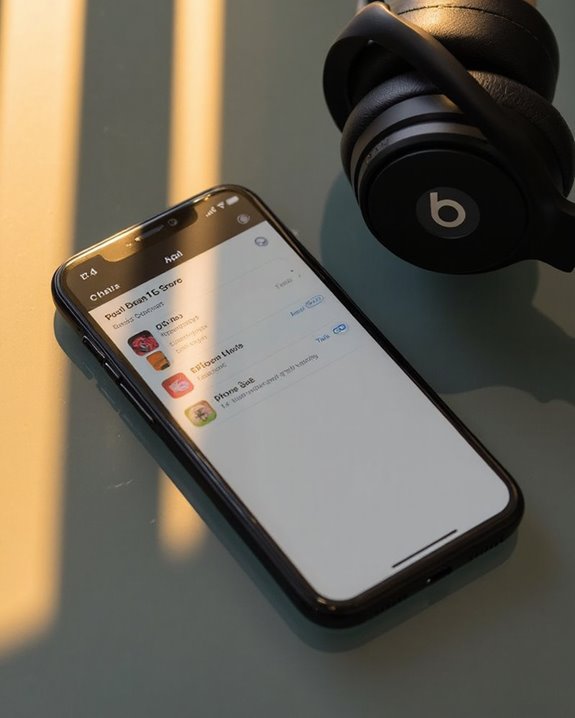
While speculation about future software integration remains tentative, the trajectory for Beats products points toward more seamless connectivity with Apple’s ecosystem. Future innovations likely include enhanced cross-platform compatibility and advanced audio processing capabilities integrated with iOS.
Tech convergence will likely manifest through AI-powered audio optimization, dynamic settings that adapt to users’ environments, and deeper health app integration for fitness tracking. Multi-device pairing and spatial audio enhancements represent the next frontier for Beats technology.
Users can anticipate a more streamlined experience with:
- Improved Find My Device functionality
- Personalized sound profiles
- Seamless audio handoff between devices
- Low-latency connections for gaming
- Open architecture allowing third-party developer integration
These advancements suggest Apple’s strategy involves enhancing Beats software through existing iOS frameworks rather than standalone applications.
Frequently Asked Questions
Can I Customize EQ Settings for Beats Headphones Through an Iphone App?
Users can adjust EQ customization for Beats headphones through iOS settings or third-party apps on iPhone. While no dedicated Beats app exists, app integration with iOS accessibility features offers alternative sound adjustment options.
Why Was the Beats Updater Never Released for Ios Devices?
Was it an oversight or strategic decision? The Beats Updater was never released for iOS since Apple designed iOS devices to handle firmware updates wirelessly through built-in over-the-air functionality instead of requiring separate updater software.
Is Voice Control Available for Beats Products Without Apple’s Siri?
Yes, voice control for Beats products is available beyond Siri. Android users can utilize Voice Alternatives like Google Assistant, while both platforms offer various Assistant Options through their respective operating systems when connected via Bluetooth.
Do Beats Products Work With Android’s Equivalent of the Find My App?
Yes, selected Beats products offer Android compatibility for tracking through the Beats app’s “Locate My Beats” feature or Google’s Find My Device. These tracking alternatives provide similar functionality to Apple’s Find My app for Android users.
Will Disconnected Beats Headphones Drain Battery When Using Find My Features?
Studies show Bluetooth devices consume minimal power when idle. Disconnected Beats headphones experience negligible Battery Drain when tracked with Find My. The Find Impact on the headphones’ battery is minimal when not actively connected.

